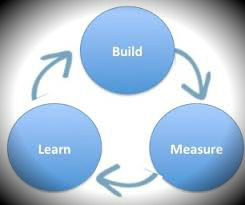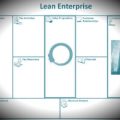In our last post we looked at various management approaches to reduce risks. One of them pertained to business experiments. In this post, we’ll dig a bit deeper to better understand this approach.
You have most likely heard of business experiments. The Harvard Business Review, as well as many other business management publications, published multiple articles on the topic in the last few years. They were mostly in the context of innovation.
What is a business experiment?
 If you have not, a business experiment is simply testing a concept (idea, program, process, design, product, strategy, etc.) with stakeholders (customers, suppliers, distributors, employees, etc.). The experiment’s goal is to provide pertinent data to assist with decision making (usually with go/no go decisions or sometimes fine-tuning).
If you have not, a business experiment is simply testing a concept (idea, program, process, design, product, strategy, etc.) with stakeholders (customers, suppliers, distributors, employees, etc.). The experiment’s goal is to provide pertinent data to assist with decision making (usually with go/no go decisions or sometimes fine-tuning).
So yes, you do know what a business experiment is. It’s been around for, well, pretty much ever. Now you’re asking yourself; Why this article is drawing my attention to it?
The reason is that business experiments are no longer used as an occasional management tool, they are transforming into the way businesses are managed.
Why are companies experimenting at an increasing rate?
 As we mentioned, business experiments are used to collect data that assists management with decision-making.
As we mentioned, business experiments are used to collect data that assists management with decision-making.
Decision-making in the business world is becoming a more demanding task (to say the least).
- Companies are significantly leaner (i.e. less resources and more work for everyone, including managers).
- The amount of information available, from secondary sources, is enough to make any manager’s head spin.
- There is a higher supply than demand for managers hence making bad decisions is a riskier proposition for your longevity in a given company than ever.
- In many sectors, markets are moving at a faster pace than ever before with competitors coming in from everywhere and customers’ choices exploding.
Hence managers are turning to ways to reduce the time and the risk involved to make the best possible decisions.
Running a business experiment to gather pertinent and timely data quickly answers the needs of over-burdened managers to reduce the risks of the decisions they make.
This explains, in part, why organisations are experimenting. What explains the increasing rate at which they are doing it, and transforming it into a management approach, has more to do with the following reasons:
- It’s cheaper and faster than ever to run business experiments (many can be done in minutes with free tools)
- An increasing number of employees or outside consultants have the skills to run experiments, analyse and interpret the collected data
- The costs to store, process and communicate the data/result are very low (compared to a decade ago) and falling constantly.
Business experiments and the Lean Startup framework
So how does an organisation go about implementing business experiments as a managerial approach? There is no one way to do so. There are however experimentation frameworks out there that can structure your approach.
One of these is the Lean Startup framework.
The base of Lean Startup is the experiment. The Lean Startup experiment is based on the scientific experiment model. It follows a build, measure, learn process.

Build (designing your experiment)
Building your experiment is a 3 step process
1. Identify the critical assumption associated with the concept to be tested
When you stop to think about it, there are thousands of assumptions we could test to assist with decision making when managing a business. If we tested all of our assumptions there would be no time or other resources left to run the business. Hence, you only want to test the critical assumptions. The ones that, if not validated, pose a business risk that you (or your organisation) are not willing to take.
2. Transform your critical assumption into a hypothesis statement
Your critical assumption was a thought you put into words. Your hypothesis statement is one sentence that can be validated (or invalidated).
3. Design the experiment that will validate (or invalidate) your hypothesis
Designing your experiment is only limited by your (and/or your team’s) imagination. The way you choose to render the concept of your hypothesis (how you present it or illustrate it) is called your Minimum Viable Product (MVP)[1].
An important part of the MVP is the minimum part of it. In the design of your experiment, you will be aiming at spending the least amount of resources in order to obtain the maximum amount of learnings from your experiment.
This doesn’t necessarily mean bootstrapping your experiment. It simply means that you will make sure that whatever learnings you need to get from your experiment, you get by using the least amount of resources possible.
This can mean it will cost you nothing but a few minutes of the time of one person or tens of thousands of dollars, if that’s the only way to go about getting the information you need. Of course, the cost of your experiment must be proportionate to the financial risk associated with it.
Measure
The reason you are making the experiment is to get data that will help you with your decision making. Hence, you want that data to be reliable.
This is where you need a bit of knowledge about primary data gathering. You need to make sure the data you collect is not biased. You won’t be looking to get statistical quality data. That would take too long, cost too much and be an over kill for your purpose.
You’ll simply need the clear direction that your data in headed for.
In business experimentation instead of gathering a lot of data once, you gather a small amount of data repetitively. Although not as precise as statistical data it does provide you with a sufficient amount of information to de-risk, to a great extent, your decision. It is also a more suited approach to an environment that changes rapidly.
When deciding on the data you will be capturing in your experiment, remember these three important rules.
Your data should be:
If it doesn’t go in the direction you thought it would then you can change something in your business strategy or product or program that will make the data go in the direction you want.
Accountable
You need to be able to re-produce the exact same experiment, in similar conditions and get similar results. For example, if you are testing the design of a snow shovel and are doing it during the storm of the century, the data you collect won’t be accountable.
Accessible
The more people who interpret the data you collect, the deeper and richer your learnings will be. So make sure that the data captured during your business experiments is shared throughout your organisation. Ensure that everyone knows they are welcome to share their interpretations on the data. Making your experiments, the data collected and the results accessible throughout your organisation will also accelerate business experiments process as some parts/resources of one experiment can be used for others.
The more experience one has at conducting experiments, the faster and more accurately they are done.
Learn
This part of business experiments, although it may seem like the easiest, is the hardest. Learning means you are either
- absorbing completely new information (rarely the case) or
- you are changing in some way (sometimes drastically) already stored information in your brain
The second type of learning is the hardest. The more contradictory the data you have is to the one you previously had, the more difficult it is to learn from it.
This stored information in your brain will create a filter that will impact how you interpret new data.
Also, the more resources that has already been invested in a project, the more difficult it is to pivot on a previous course of action.
The benefits of using business experiments to manage
 The main benefit, as mentioned previously, is to reduce the risk of your business decisions. This in turn will minimise your losses on various projects.
The main benefit, as mentioned previously, is to reduce the risk of your business decisions. This in turn will minimise your losses on various projects.
Another benefit, that is not obvious, is the improvement in work relationships. This happens for multiple reasons.
First, employees get a sense of empowerment. If they submit ideas to upper management with supporting empirical data, they know their idea will be considered.
Also, managers don’t need to spend as much time justifying their decisions. They let the data speak for itself. They do however need to include questioning the quality of the data into their process.
Finally, as mentioned, organisations that use business experiments on a daily basis to manage usually encourage employees to share the results of their experiments. This not only improves internal communication and efficiency it also creates an environment where mistakes, that bring new learnings, are valued.
This type of environment is essential to not only foster innovation but pro-activity.
Getting started with business experiments
 If you think that using business experiments may be a profitable management approach for your business, start with one project (which will be a meta experiment) during which all higher risk decisions will be taken with supporting data. The project you select should be one that has high inherent risk within it (like launching a product in a new and different market). It should also be a type of project that is somewhat recurrent in your organisation. This will help you have a baseline scenario in order to compare the results of the meta experiment. Make sure to identify the metrics you’ll be evaluating before starting your meta experiment.
If you think that using business experiments may be a profitable management approach for your business, start with one project (which will be a meta experiment) during which all higher risk decisions will be taken with supporting data. The project you select should be one that has high inherent risk within it (like launching a product in a new and different market). It should also be a type of project that is somewhat recurrent in your organisation. This will help you have a baseline scenario in order to compare the results of the meta experiment. Make sure to identify the metrics you’ll be evaluating before starting your meta experiment.
Some metrics (there are many others) you may want to look at would be:
- How long the project took from start to finish
- Overall budget
- What % of the initial planed output was achieved
- Variables pertaining to team cohesion
- Variables pertaining to employee (the ones who worked on the project directly and indirectly) satisfaction
- ROI projected vs achieved on a timeline (3, 6, 12, 24 months)
Implementing any new management approach takes a while. There is no one-size-fits-all recipe. You need to…yes you got it…experiment and find the approach best suited for your organisation.
If you need coaching or help getting started with your first experiment Baker Marketing can definitely help.
[1] Although MVP most often refers to a prototype of a product, it also means the representation of your hypothesis you will present to participants of your experience.









